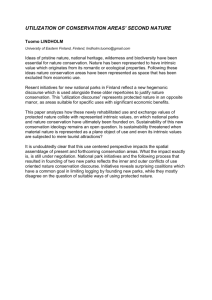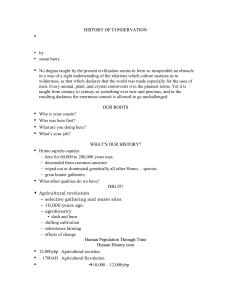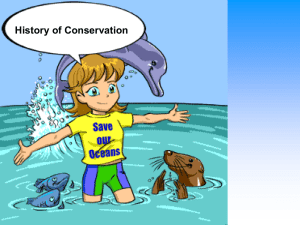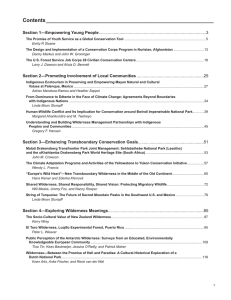History of the Environment Gifford Pinchot Aldo Leopold FFDCA
advertisement
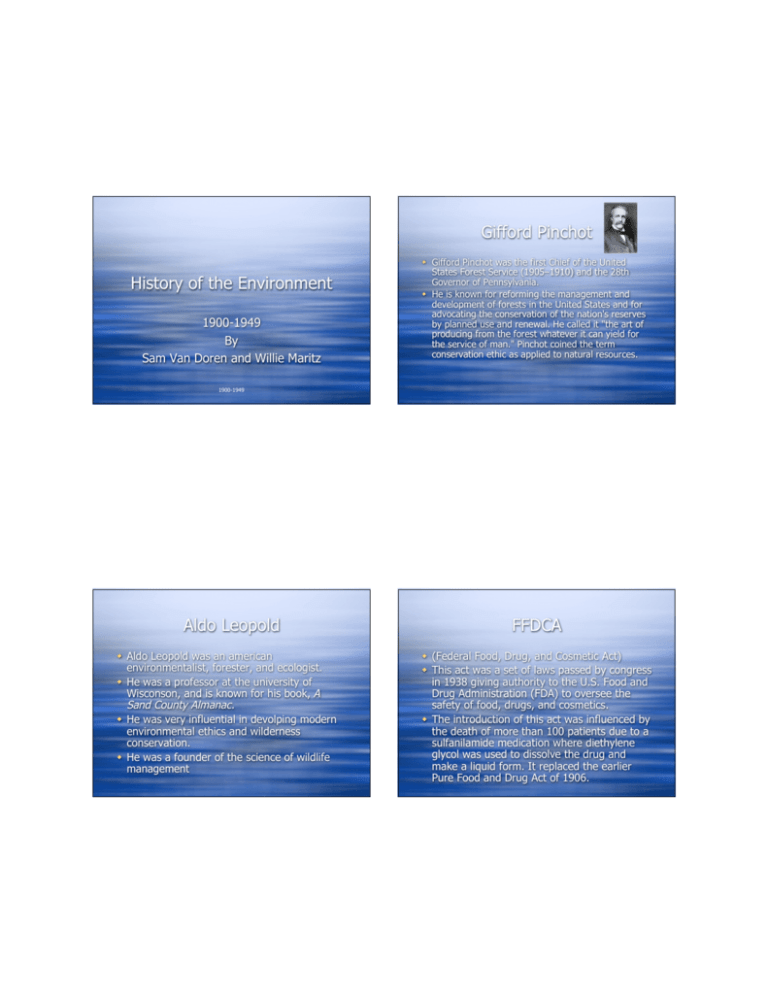
Gifford Pinchot History of the Environment 1900-1949 By Sam Van Doren and Willie Maritz Gifford Pinchot was the first Chief of the United States Forest Service (1905–1910) and the 28th Governor of Pennsylvania. He is known for reforming the management and development of forests in the United States and for advocating the conservation of the nation's reserves by planned use and renewal. He called it "the art of producing from the forest whatever it can yield for the service of man." Pinchot coined the term conservation ethic as applied to natural resources. 1900-1949 Aldo Leopold Aldo Leopold was an american environmentalist, forester, and ecologist. He was a professor at the university of Wisconson, and is known for his book, A Sand County Almanac. He was very influential in devolping modern environmental ethics and wilderness conservation. He was a founder of the science of wildlife management FFDCA (Federal Food, Drug, and Cosmetic Act) This act was a set of laws passed by congress in 1938 giving authority to the U.S. Food and Drug Administration (FDA) to oversee the safety of food, drugs, and cosmetics. The introduction of this act was influenced by the death of more than 100 patients due to a sulfanilamide medication where diethylene glycol was used to dissolve the drug and make a liquid form. It replaced the earlier Pure Food and Drug Act of 1906. Theodore Roosevelt National Park Service Teddy was the 26th president of the U.S. Did a of of good stuff for the environment Setting aside land for national forests Establishing wildlife refuges Developing the farmlands of the American West Advocated protection of natural resources Reclamation Act of 1902 turned arid southwest land into farmland Helped with soil and water conservation, preservation of forests, and areas for recreation Has a national park named for him in North Dakota The National Park Service was created on August 25, 1916, by Congress through the National Park Service Organic Act. It is the U.S. federal agency that manages all national parks, many national monuments, and other conservation and historical properties with various title designations. Leaded Gasoline Wilderness Society Gasoline treated with a lead comound to reduce motor knocks Bad for the Environment Combustion of gasoline released lead into the air which could lead to lead poisoning Leaded gas was used just after WWI because it was cheaper to make and use The Wilderness Society is an American organization that is dedicated to protecting America's wilderness. It was formed in 1935 and currently has over 300,000 members and supporters One of The Wilderness Societyʼs strengths is building coalitions consisting of environmental groups, as well as representatives of the faith community, sportsmen, ranchers, scientists, business owners, and others. St. Louis Smog Episode The 1939 St. Louis smog was a severe smog episode that affected St. Louis, Missouri in the United States in 1939. Visibility was so bad that for a week residents had to use lanterns during the daytime to see outside It was caused by large scale use of coal to power and heat homes around St. Louis. Thanks for listening!!!!!!!!!!!!!!!!!!!!!! National Parks and Access to the Countryside Act of 1949 This act was passed by the Parliament of the United Kingdom which created the National Parks Commission which then became the Countryside Commission and later became the Countryside Agency It provided the framework for the creation of national parks and Areas of Outstanding Natural Beauty in Englnd and Wales.






